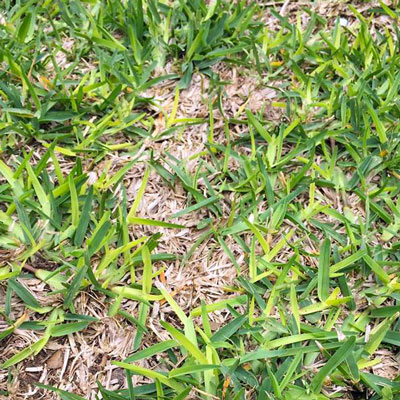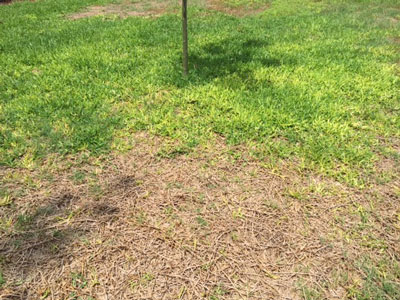Question of the Week – Number Two: April 9, 2020
“Why is my St. Augustine so anemic looking? What can I do?”
There have been recent days when this question has made up half of my emails and phone calls. (Most of the other half were the frozen crape myrtles I covered in this week’s other question!)
Let me address this question’s answer the quick way.

Take all root rot…
• Soil-borne fungus that causes death of the lawn’s roots.
• Attacks primarily St. Augustine, but also zoysias.

• Grass is yellowed in irregular patches but does not respond to fertilizers.
• Runners have browned, stubby roots.
• Runners pull loose from the soil easily, almost as if grub worms had been involved, but grub worms are seldom found in the soil.

• Affected areas can be in sun or shade.
• TARR is a cool-season disease that appears in April and May. It is not present in lawns in hot summer weather.
• TARR is worst in alkaline soils, hence the old (now outdated) recommendation of applying a 1-inch layer of sphagnum peat moss to provide an acidic layer on top of the soil. However…
• The best remedy is application of the fungicide Azoxystrobin. It is found in nurseries and hardware stores. Ask a garden professional to help you, and look for that name on the container.
• Grass should show improvement within 1-2 weeks after treatment.
